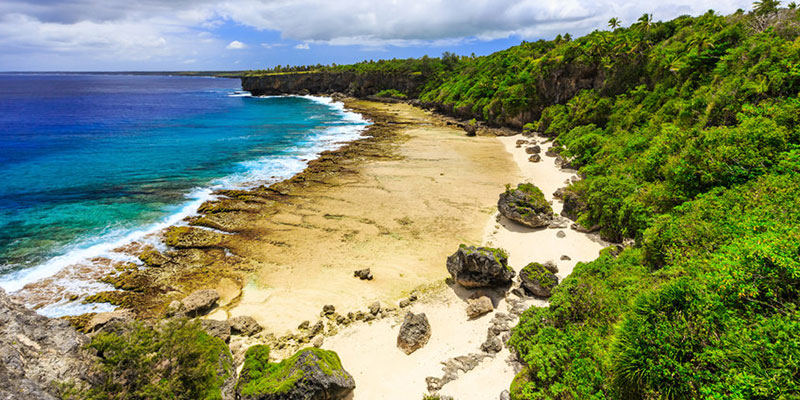Unpredictable disaster, natural or manmade, can quickly endanger drinking water supplies, as it did when an underwater volcanic eruption buried the island nation of Tonga under volcanic ash.
No matter where, authorities can prepare for drinking water emergencies with a decentralized approach
In January, an undersea volcano 40 miles off the coast of Tonga exploded, shaking the Pacific island nation and covering it with volcanic ash. The eruption was followed by 50-foot tsunami waves. The catastrophe shut down rainwater harvesting systems, and aquifers needed to be monitored for possible contamination. With ash leaving airport runways impassable, aid did not begin to arrive until five days after the start of the eruption. Tens of thousands were left without drinking water.
Eruption Effects on Tonga’s Water
While Tonga’s regular tsunami preparedness drills likely kept the death toll low during the disaster, cascading problems related to water supplies became life-threatening. Most rural Tongans rely on rainwater collected from rooftops, while city residents rely on a shallow freshwater limestone aquifer.
A national emergency team soon went into action to distribute 16,000 gallons (60,000 L) of water. Additionally, a Royal New Zealand Navy ship with an 18,500 GPD (70,000 L/d) desalination plant arrived in Tonga’s harbor and within a few days began producing drinking water.
Restoration of water supplies has been progressing slowly, forcing residents of hard-hit outlying islands to relocate to Tonga’s main island. The volcanic ash and saltwater from the tsunami have also increased the risk of deadly illnesses such as cholera.
Decentralization Brings Resilience
While not all locations have a tsunami risk as high as Tonga’s, the eruption and following crises illustrate the vulnerability of water systems around the world. Many types of disasters can create humanitarian catastrophes that last for months. It’s a “classic textbook case of what happens when you have one disaster on top of another,” explained Craig Colten of the Water Institute.
How can we set up our water infrastructure to weather the storm? After all, we know that the cost of inaction is many times the cost of preparation, so it pays to build disaster resilience into water systems.
Decentralization is high on the list of strategies to make water systems more resilient to such disasters. Decentralization simply means placing smaller, scaled-to-need water infrastructure close to the point of use. That means fewer long stretches of pipe that can be damaged in a disaster. It also means a system with many functional plants, so if one is damaged, the entire system doesn’t go out of commission.
For instance, it took months before the large, centralized wastewater treatment plant on the Caribbean island of St. Thomas could be restarted after a devastating hurricane, but Fluence’s small-scale MABR-based plant in the island’s Bordeaux region was fully operational only hours after being restarted with a generator.
With Fluence’s modular desalination and wastewater treatment units, the same resilience can be established. Fluence offers modular, packaged plants with various finance packages, depending on your needs. While many regions may find it difficult to secure initial investment capital and the expertise to manage ongoing maintenance, Fluence’s Water Management Services makes new infrastructure possible with no upfront investment through PPP financing structures. Fluence takes care of all operations and maintenance while you only pay for clean water.
Contact the experts at Fluence who can help you identify your best strategy for water resilience.

